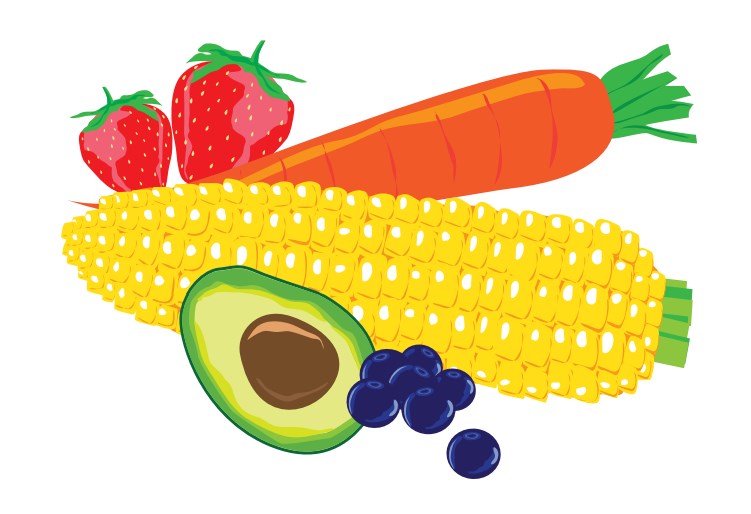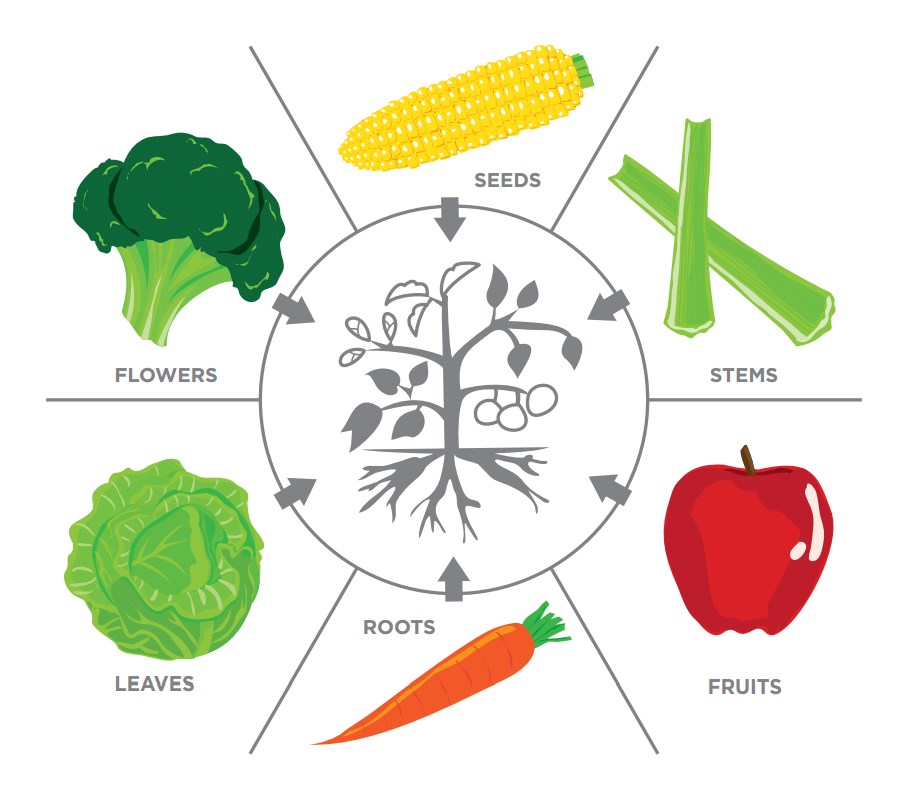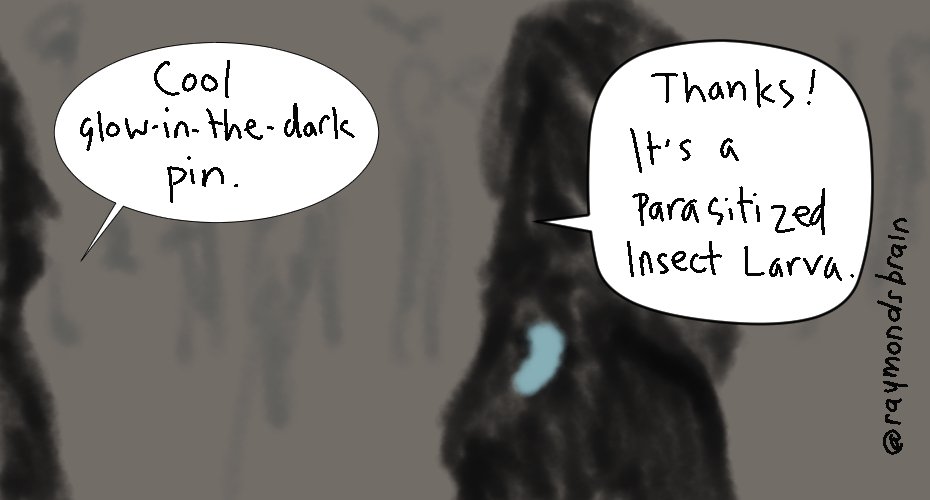Objectives
-
Identify and compare a healthy variety of fruits and vegetables, and how they can improve their own eating habits.
-
Identify and compare the parts of plants that we eat, and the roles that they play in a mature plant.
-
Explain the needs of plants by observing the effect of capillary action.
-
Explain how plants use seeds to reproduce and how seeds are dispersed.
-
Identify plants’ adaptations to their environment.
Materials
Background
Plants play a big part in keeping us healthy. Canada’s Food Guide recommends that we eat several different kinds of fruits and vegetables five times a day so that we get a variety of vitamins and minerals.
Food Rainbow
No one food or food group provides all the nutrients our bodies need, so eating a variety of foods is important. Brightly coloured fruits and vegetables generally have more nutrients, and eating at least one fruit or vegetable from each colour group (red, orange/yellow, green, blue/purple and white) gives our bodies the range of healthy vitamins, minerals and phytochemicals that make and keep our bodies healthy.

Plant Parts
We get energy from plants in two ways: by eating the seeds or by eating parts of the mature plant. Most plants have roots, stems, leaves, flowers, fruits and seeds. These plant parts all have a role in keeping a mature plant healthy and helping it reproduce.

Roots help provide support by anchoring the plant and absorbing the water and minerals plants need to create their nutrients. Roots can also store sugars and carbohydrates that the plant uses to carry out other functions. Plants can have a taproot system, like a carrot, or a fibrous root system, like lettuce.
Stems carry water and minerals from the roots to the leaves, and carry the food produced by the leaves to other parts of the plant. These require two types of tubes made up of different kinds of cells: xylem cells move water and phloem cells move food. Stems also provide support for the plant and can move the leaves toward the sunlight that is needed to produce food. Most plants can be divided into one of two general categories, based on their stems: herbaceous (short, soft plants) or woody (tall, stiff plants).
Leaves come in many different shapes and sizes, but they all have one job: to make food for the rest of the plant.
Flowers help the plant reproduce so that more plants can be made.
Fruit can be thought of as a swollen flower. Apples, oranges, and even tomatoes, cucumbers and beans, are types of fruit because they have seeds inside them. Fruit is meant to be eaten so that its seeds are dispersed by the animal that eats it. Seeds can also be left behind, but with material that will help them grow into new plants.
Seeds contain everything needed for it to become a mature plant: a tiny plant (embryo) with leaves, stems, root parts and the food it needs to begin growing. This is all wrapped up in a seed coat, which protects the embryo from microbes and other invaders, and prevents the inside from drying out.
How Plants Grow
Seeds are the beginning of the plant life cycle. After the seed is dispersed, it gets buried in the ground. It then takes in water and minerals from the soil to germinate. The seed grows small roots and shoots that push through the surface of the soil.
Once the shoot has used up all the energy in the seed, it begins to produce its own energy from sunlight, water and carbon dioxide (photosynthesis) and develops to become a seedling. Seedlings and mature plants take in water and dissolved minerals through a process called capillary action. Water is drawn up through millions of tiny tubes called xylem, which then carry minerals to various parts of the plant. In the leaves, the plant uses energy from the sun, carbon dioxide from the air, and water from the ground to produce sugars that help the plant to develop all of its parts – including the seeds that begin the life cycle again!
Vocabulary
capillary action: The ability of an object, like a plant, to draw liquid inside it. The process is also called wicking.
germinate: To sprout from a seed into a seedling.
plant embryo: A “baby plant”, contained in a seed, waiting for the right conditions to grow.
seed coat: The protective layer on the outside of a seed.
phytochemicals: Literally “plant chemicals”; compounds found in plants that, while they aren’t essential nutrients like fats, proteins and carbohydrates, are thought to still be beneficial to our health when we eat these plants.
surface tension: The tendency of water to be attracted to itself, while repelling from other materials; caused by hydrogen bonding.
transpiration: The loss of water vapour from plant parts, usually leaves; similar to sweating and evaporation. A part of the water cycle.
xylem: Long, woody tubes in a plant’s stem that transport water from the roots to the leaves.
Other Resources
Tomatosphere | Parts of a Plant
Internet Archive | Community Video | BBC2’s The Private Life of Plants
City of Vancouver | People and Programs | Community Gardens
UBC Botanical Garden & Centre for Plant Research | School Groups
BC Agriculture in the Classroom Foundation
Centre for Sustainable Food Systems at UBC Farm | FarmWonders Children’s Programs
VanDusen Botanical Garden | School Programs


 copy.jpg)


